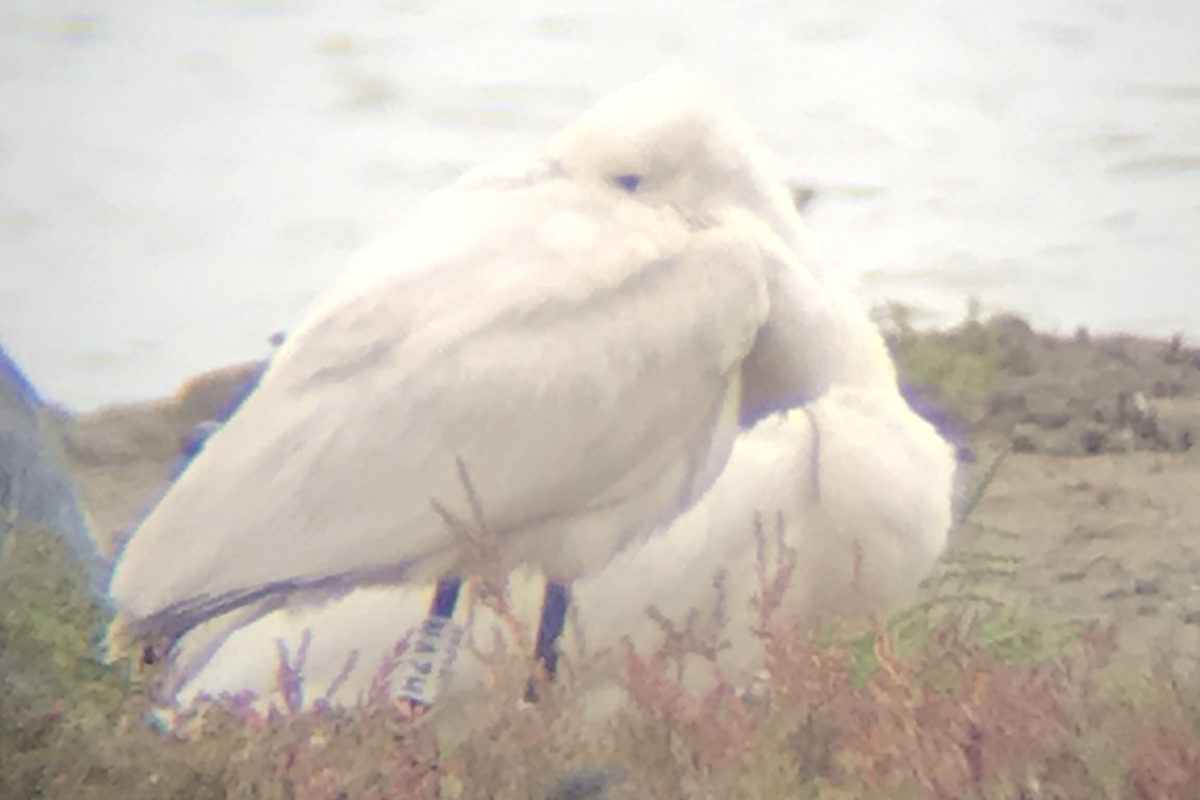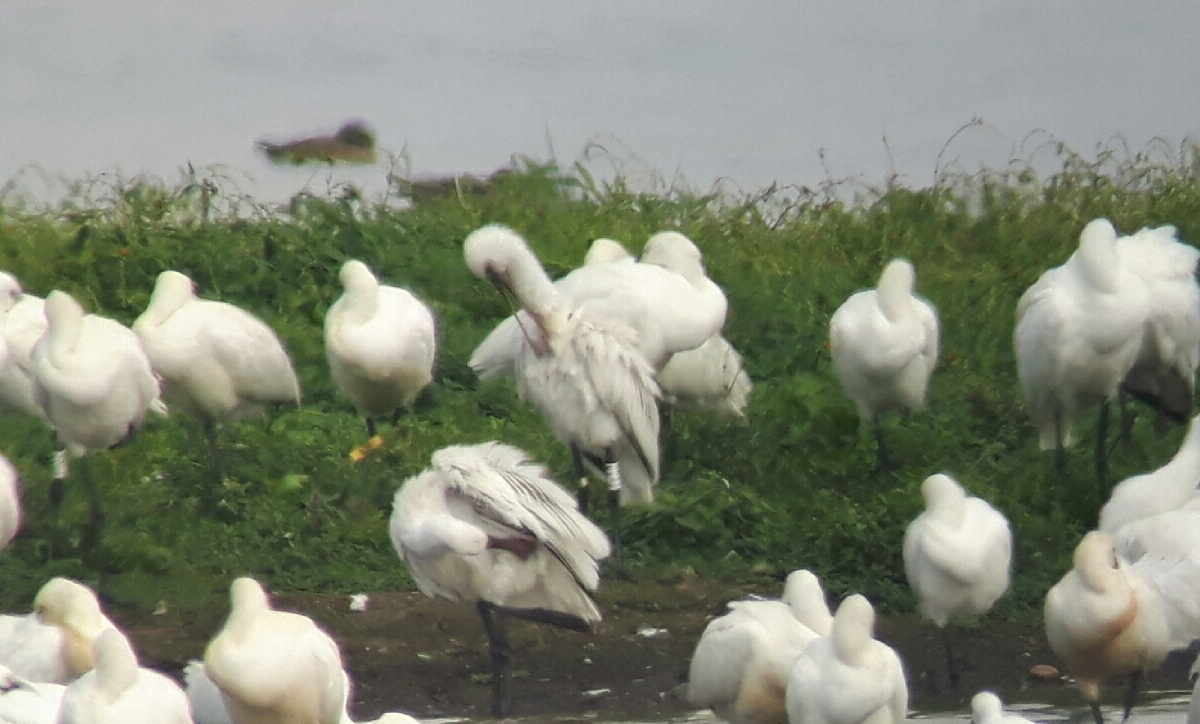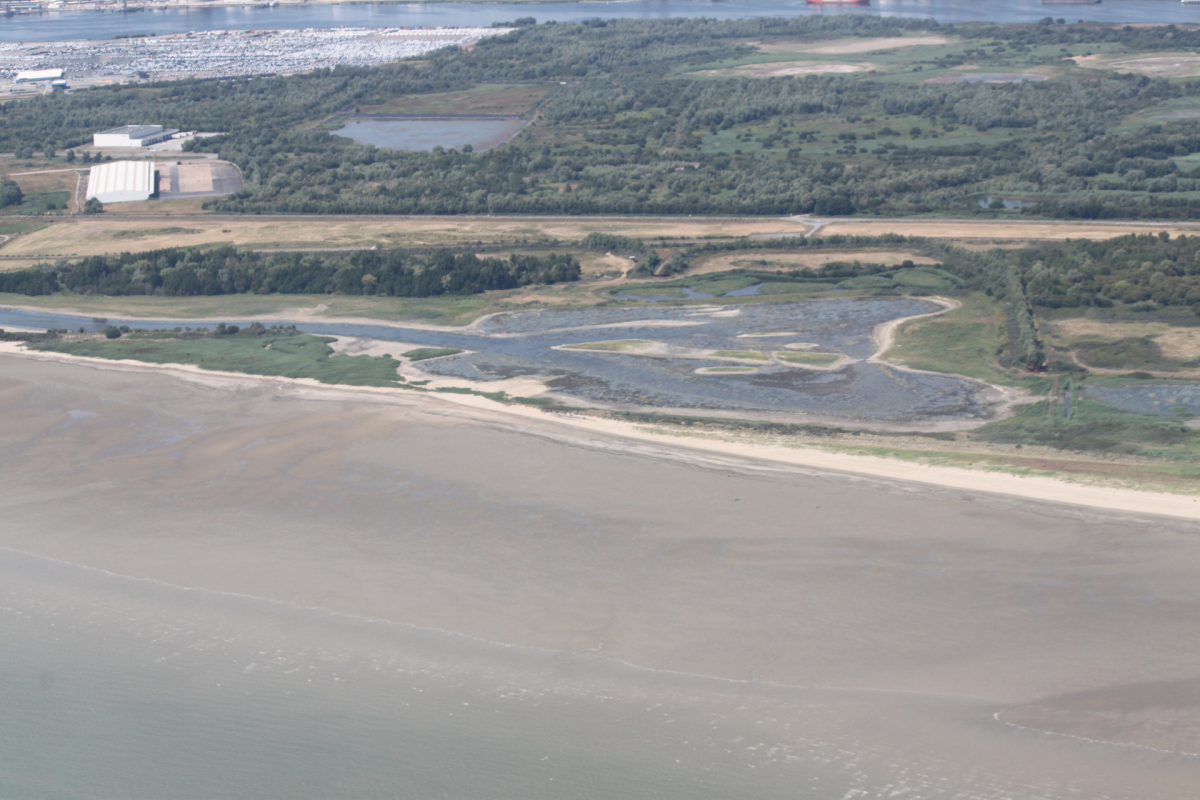
The day after he was observed, he continued his migratory journey, crossing the mainland of Bretagne and the Bay of Biscay instead of following the coast. After 1,5 day of non-stop flight, he arrived at the Embalse de Santa Teresa in the inland of Spain in the afternoon of 18 September and stayed there to spend the night. But the next morning he already continued his journey.
Also Veer continued her migration, departing in the early morning of 18 September from the Dutch Delta to arrive about 24 hours later in Marais d’Orx. This area is known to be an important staging site during southward migration. Due to intensive monitoring by French colleagues working at the Maison du Marais, combining counts with daily observations of colour-marked individuals, they were able to estimate that about 30% of the northwest European breeding population makes a short stop (1-3 days) in Marais d’Orx. This morning, Veer was observed just after she arrived, in a group of 250 spoonbills. A total of about 900 spoonbills were present in the Marais d’Orx today, a record count for this area!

The Marais d’Orx, just like the Seine estuary, is a so-called Réserve Naturelle Nationale, meaning that it is a highly protected exceptional natural environment at the national level. Spoonbills seem to like such places!
